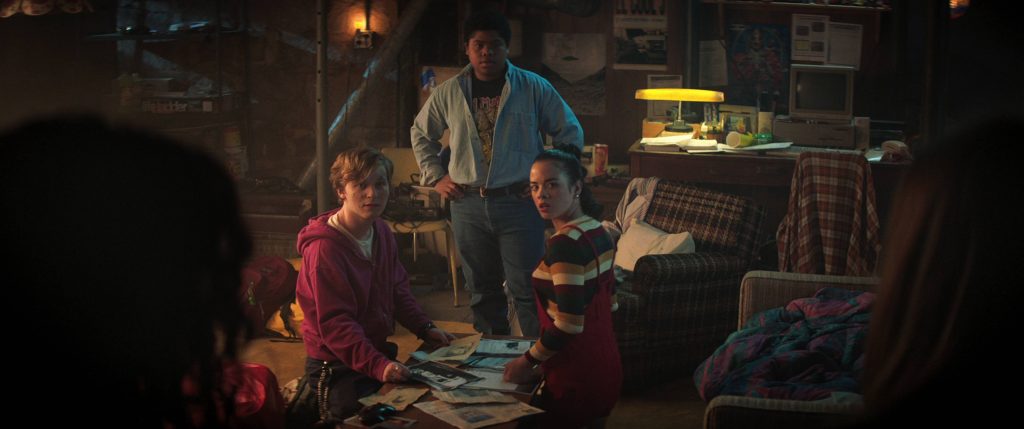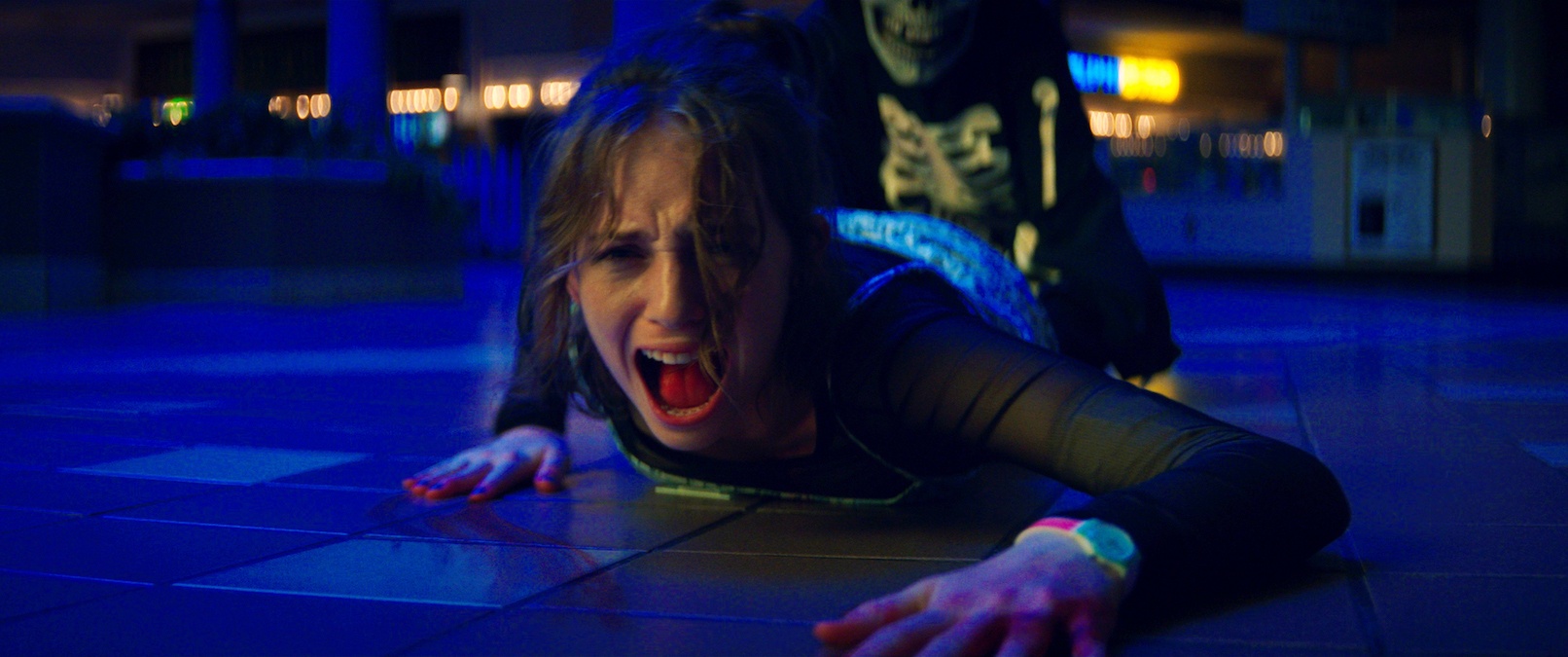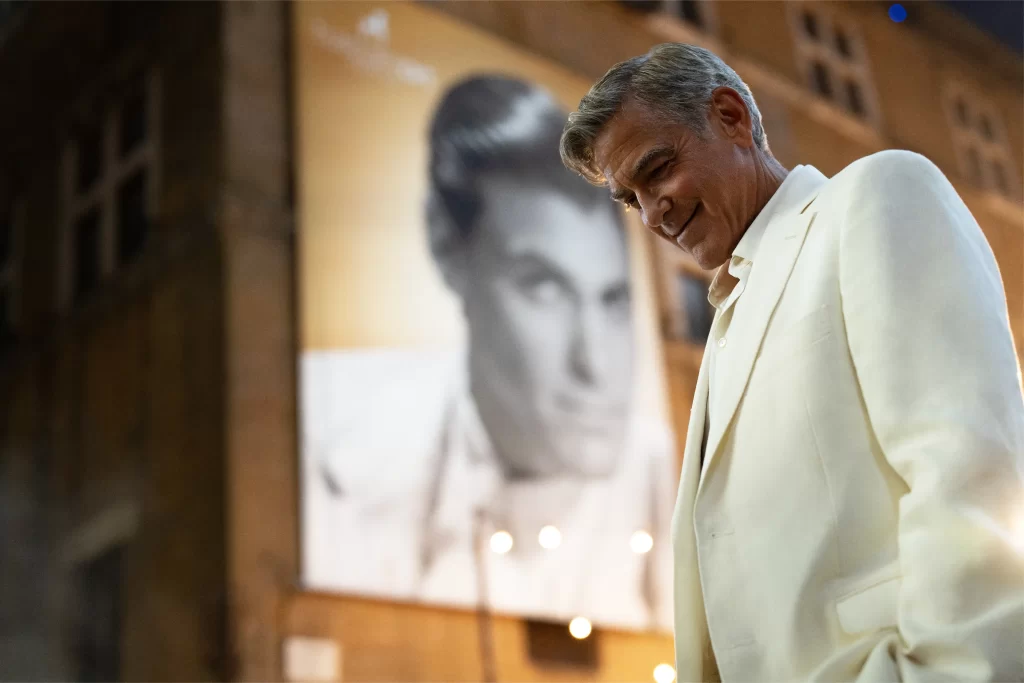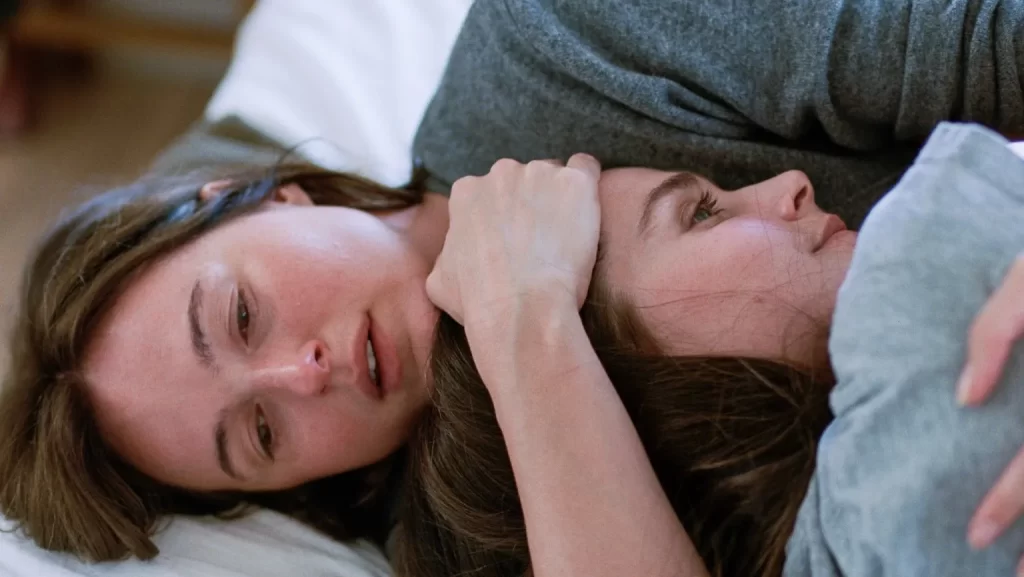The new three-part adaptation of Fear Street takes its name from R.L. Stine’s teen slasher book series – but stylistically it owes fealty to other influences, ones that make themselves known in Fear Street Part One: 1994’s opening moments. The cold open features Stranger Things alum Maya Hawke, in 90s-appropriate attire, working at a mall bookstore. Hawke serves as the movie’s analog for Drew Barrymore in Scream when, in a neon-lit set piece courtesy of Stranger Things cinematographer Caleb Heymann, her character Heather gets cruelly murdered by a killer in a skull mask.
This sequence sets the expectations up front, for good and for ill. Each entry in the trilogy follows the horror subgenre associated with its setting. For 1994, that means the Kevin Williamson brand of genre-literate high school horror (Scream didn’t start that trend until 1996, but hey, semantics). The other statement of intent, however, is a letdown: from its shared cast and crew to its nostalgia-soaked framework, 1994 looks and feels like Stranger Things, and even more disappointingly, that’s by design.
1994 sets up the connective tissue that will bind the three films. We’re introduced to the embattled neighboring towns of crime-ridden Shadyside and affluent Sunnyvale. While the rest of Shadyside High grieves Heather’s murder, moody Deena (Kiana Madeira) is mourning her breakup with girlfriend Sam (Olivia Scott Welch), who moved to Sunnyvale after her parents’ divorce.
Deena’s nerdy brother Josh (Benjamin Flores Jr.) believes Heather’s death is connected to a town curse instigated in the 17th century by witch Sarah Fier. Josh’s theory proves to have legs after a vigil for Heather at a Shadyside/Sunnyvale football game devolves into fisticuffs and a car accident. Sam inadvertently connects with the spirit of Sarah Fier, summoning the souls of Shadyside murderers past. These undead killers pursue Sam, Deena, Josh and their friends Kate (Julia Rehwald) and Simon (Fred Hechinger), as the teens figure out how to stop the curse.

True to the more explicit nature of Stine’s Fear Street books (think Goosebumps for the Jason Voorhees set) 1994 racks up some gnarly, creative kills that suggest similar nasty fun in the two forthcoming entries. The script, co-written by director Leigh Janiak, also takes welcome cues from Williamson’s self-aware, quippy writing style. Madeira, Welch, Flores, Rehwald and Hechinger have a good dynamic and deliver that dialogue well.
Unfortunately, 1994 feels like the first episode of a TV show, despite being a 105-minute feature. It’s particularly apparent in the pacing, which at times feels like it’s trying to fill space. That thumb-twiddling might have been better used in the service of stronger worldbuilding, something 1994 could have cribbed from its cinematic inspiration.
Though steeped in nostalgia, 1994 doesn’t look like the movies it’s trying to mimic. It employs the same lighting and color schemes as Stranger Things, which feels off from the 90s brightness of Scream, The Faculty or I Know What You Did Last Summer. That look also adds to an uncomfortable sense of slick, focus-grouped packaging, making the whole enterprise feel less like a genre throwback and more like a studio trying to cash in on a successful formula.
There are enough commendable elements in 1994 to warrant sticking around for Fear Street Part Two: 1978 and Fear Street Part Three: 1666 later this month to see where all this leads. However, it’s hard to shake a twinge of disappointment that the first installment could’ve been more interesting if the filmmakers had taken a few more risks. As it is, 1994 is a fine, if slightly underwhelming, start.
B-
“Fear Street Part One: 1994” streams Friday on Netflix. The next two parts (which we will also review) stream on the following Fridays.



